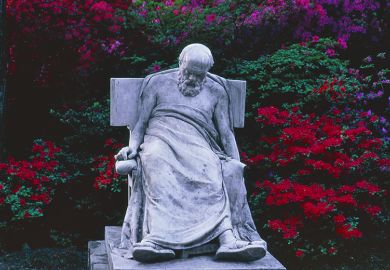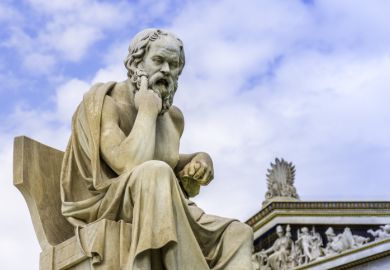My enemy is kitsch, not communism", says Milan Kundera's painter-heroine. For Theodor Adorno the history of 20th-century art is of art's desperate, teetering and convulsive acrobatics whereby it can prevent itself falling into the revoltingly sweet-smelling syrup of kitsch which is modern culture.
That culture is for him just as degenerate, whether the product of fascism, socialist realism, or of their oleaginous conqueror, consumer totalitarianism, which now turns hope and consolation alike into the saccharine fantasies of advertisement and shopping mall. In the deathly enervations of this civic hedonism, the only art is to refuse art: to devise an austere hieroglyph of enigmatic transcendence and denial. Such an art keeps faith with that promise of happiness which it must be art's business to hold out by making itself impossibly difficult of access, by disfiguring beauty and stifling eloquence. It is the art of Samuel Beckett, Paul Celan and, of course, Arnold Schoenberg.
Aesthetic Theory was all but finished when Adorno died suddenly in 1969 at the age of 66. The first English translation was published by Routledge in 1984, having been edited by his widow, for Suhrkamp, in 1970. That latter was a formidably tidied up and neatly dressed version of this vast, opaque and protean work. The new translation restores the intentionally far more difficult work Adorno was writing during his last summer.
At first sight, there is much here to encourage the street mountebanks of postmodernism in their much-intoned certainties about uncertainty. Art in Adorno is necessarily the art of negation. All artworks speak against themselves; they rebut identity-thinking of their nature; they oppose mimesis, while at the same time their spirit is that - in Adorno's characteristically contorted abstraction - of "objectivated mimetic comportment".
There is in Adorno a hysteria one is hard put not to greet with hilarity. Adorno, John Ellis has said, needs a dose of Prozac. Adorno would probably agree, if he had ever decided, in a century which takes in Auschwitz and Bloomingdales, that art was beaten and aesthetics had finally dissolved into the fetishism of commodities.
For he takes art with absolute seriousness as being the only source of redemption in an age sold out to selling, and deprived of any social agency capable of retrieving politics from capital. So his postmodern paradoxes and most typical tropes are in the service of the grand mysteries of old art: truth, spirit, beauty, hope, nature. The nameless surplus of meaning stored by contradiction in art is the source of a human credit which, in a better time, may be released to fulfil "la promesse de bonheur".
The phrase is Stendhal's but Adorno made it, in spite of everything, his motto: "Radical art today is synonymous with dark art; its primary colour is black." In the same breath, with his own inimitably fetching charm, Adorno reminds us of art's origins in those fairy tales which restored human comity with nature. These ancient folk-memories arrange for wild animals to collude with children, and for grown-up children who have not lost their inheritance of, as Dickens wonderfully put it in David Copperfield, "a certain freshness, and gentleness, and capacity of being pleased", to rediscover the happiness they were promised when they were little.
This powerful combination of effortless caritas with puritanism is Adorno's noble example, and transforms his gentle and awkward gryphon into a great book. He restates the titanic purpose of modernism. All art is for him avant-garde art. But it is still a bohemian, migrant, underpaid avant-garde and energetically traditional with it. It is conscientiously disdainful of the Saatchi gallery and the ICA. Adorno's painters today would be David Kossoff and Patrick Heron; his composer David Blake; his poet Jeremy Prynne; his critic Christopher Ricks.
Fred Inglis is professor of cultural studies, University of Sheffield.
Aesthetic Theory
Author - Theodor W. Adorno
ISBN - 0 485 30069
Publisher - Athlone
Price - £55.00
Pages - 383
Translator - Robert Hullot-Kentor
Register to continue
Why register?
- Registration is free and only takes a moment
- Once registered, you can read 3 articles a month
- Sign up for our newsletter
Subscribe
Or subscribe for unlimited access to:
- Unlimited access to news, views, insights & reviews
- Digital editions
- Digital access to THE’s university and college rankings analysis
Already registered or a current subscriber?



